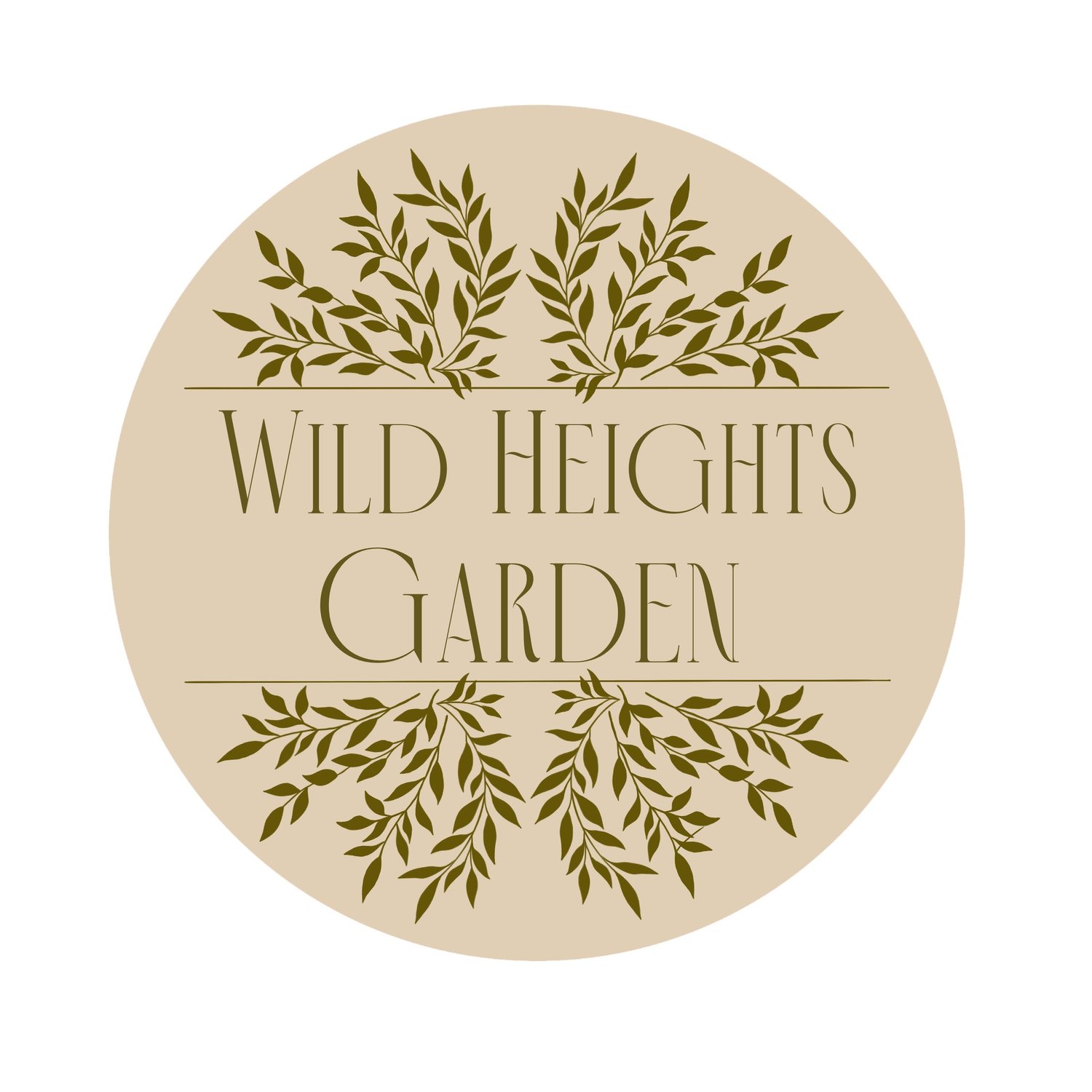CREATING SPACES
THE HEDGE
I started planting the Arborvitae hedge in 2001, a handful at a time from 5 and 7 gallon nursery pots. The goal was to create privacy and to provide a structural frame for the entire back garden.
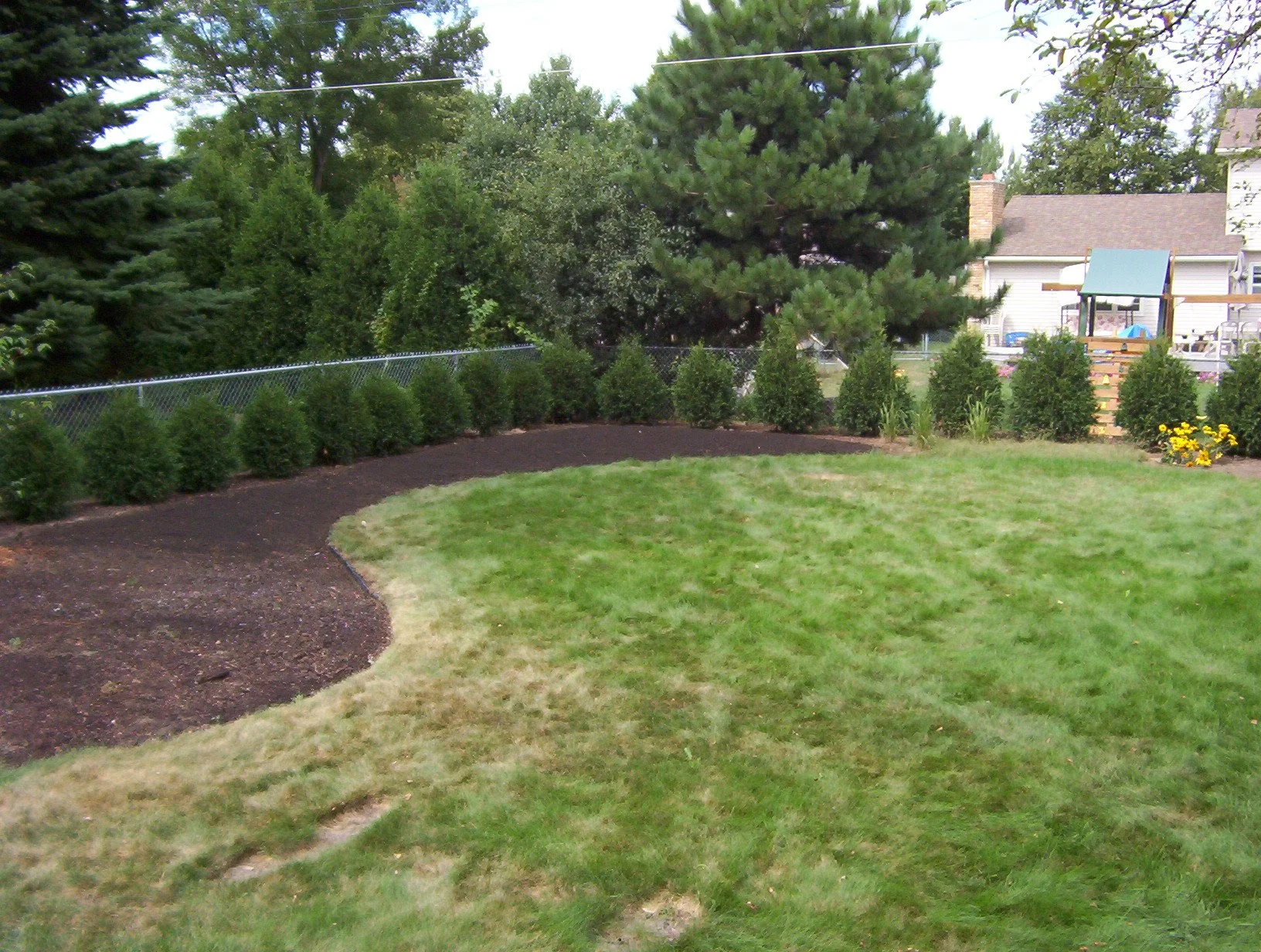
First group of plantings in 2002 & 2003. With one income and a growing family building the hedge took quite some time.
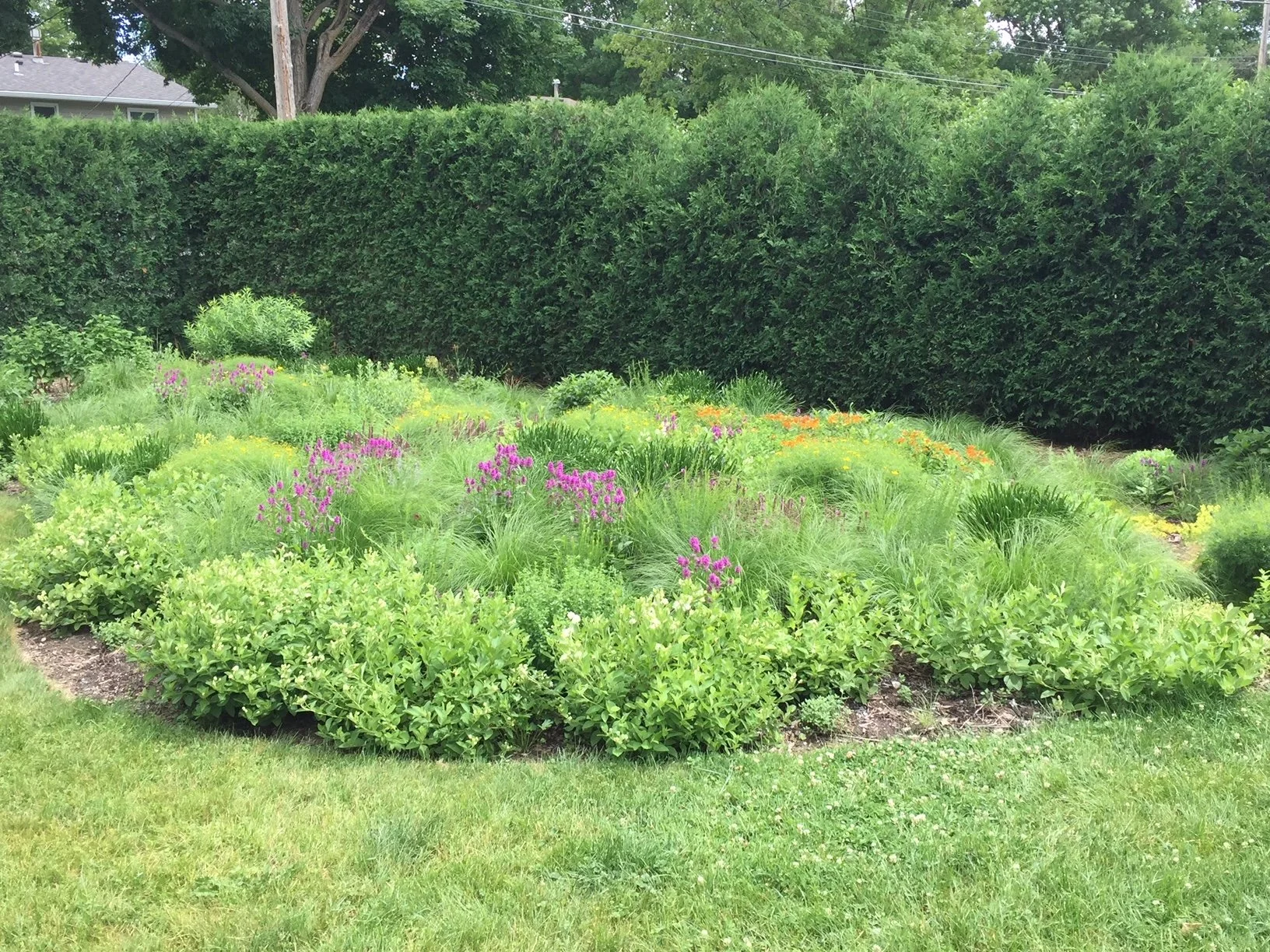
You can see the last handful of Arborvitae to be planted on the right, finally catching up in this picture from 2021.
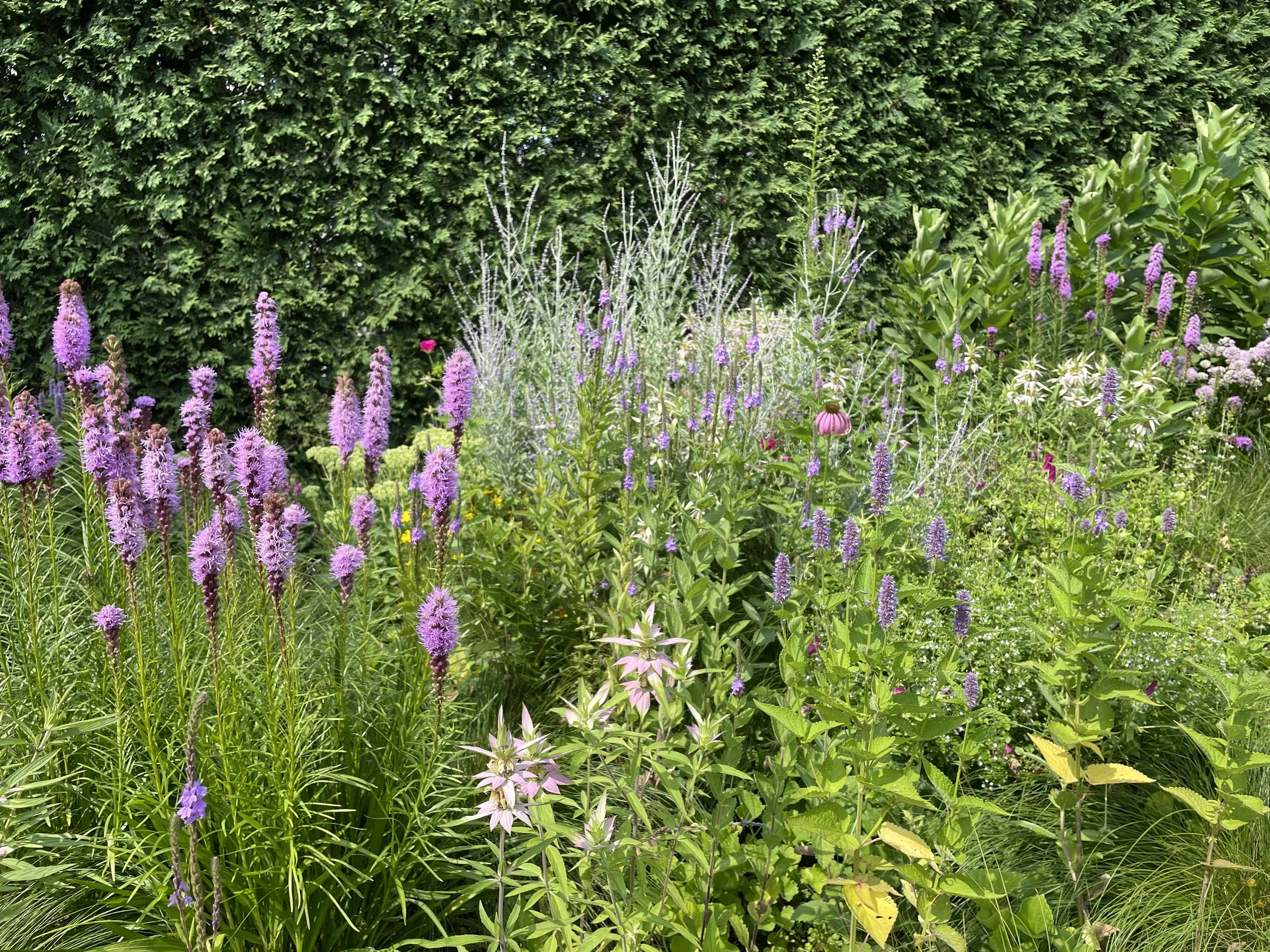
The dark green wall provides a nice consistent textural background for the wildflowers.
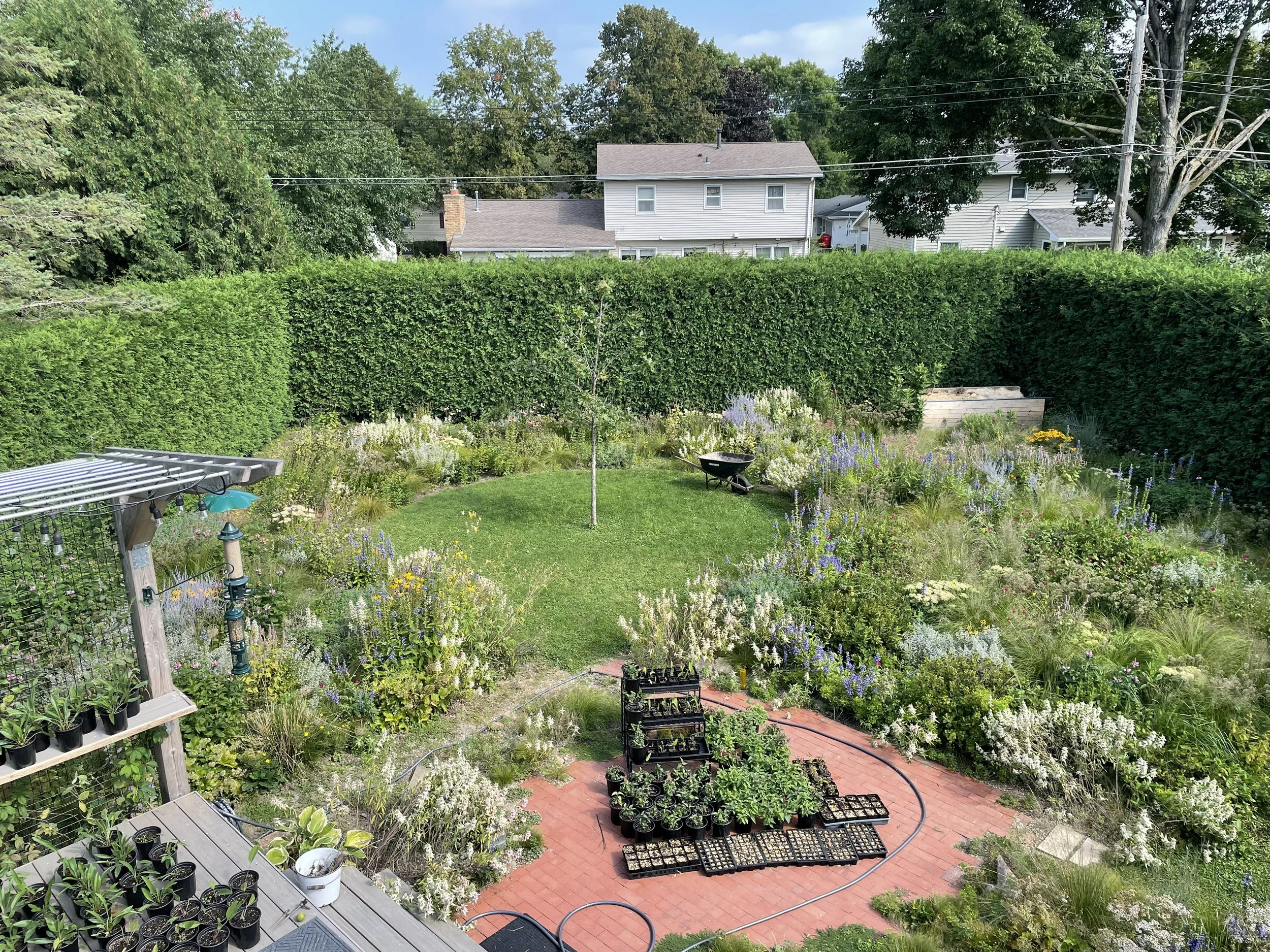
The hedge now provides not only a visual frame for the wild plantings but great privacy for enjoying the outdoor spaces.
SEATING AREA

Virgin's Bower (Clematis virginiana) and American Bittersweet (Celastrus scandens) grow up the metal trellises on each side of the seating area.
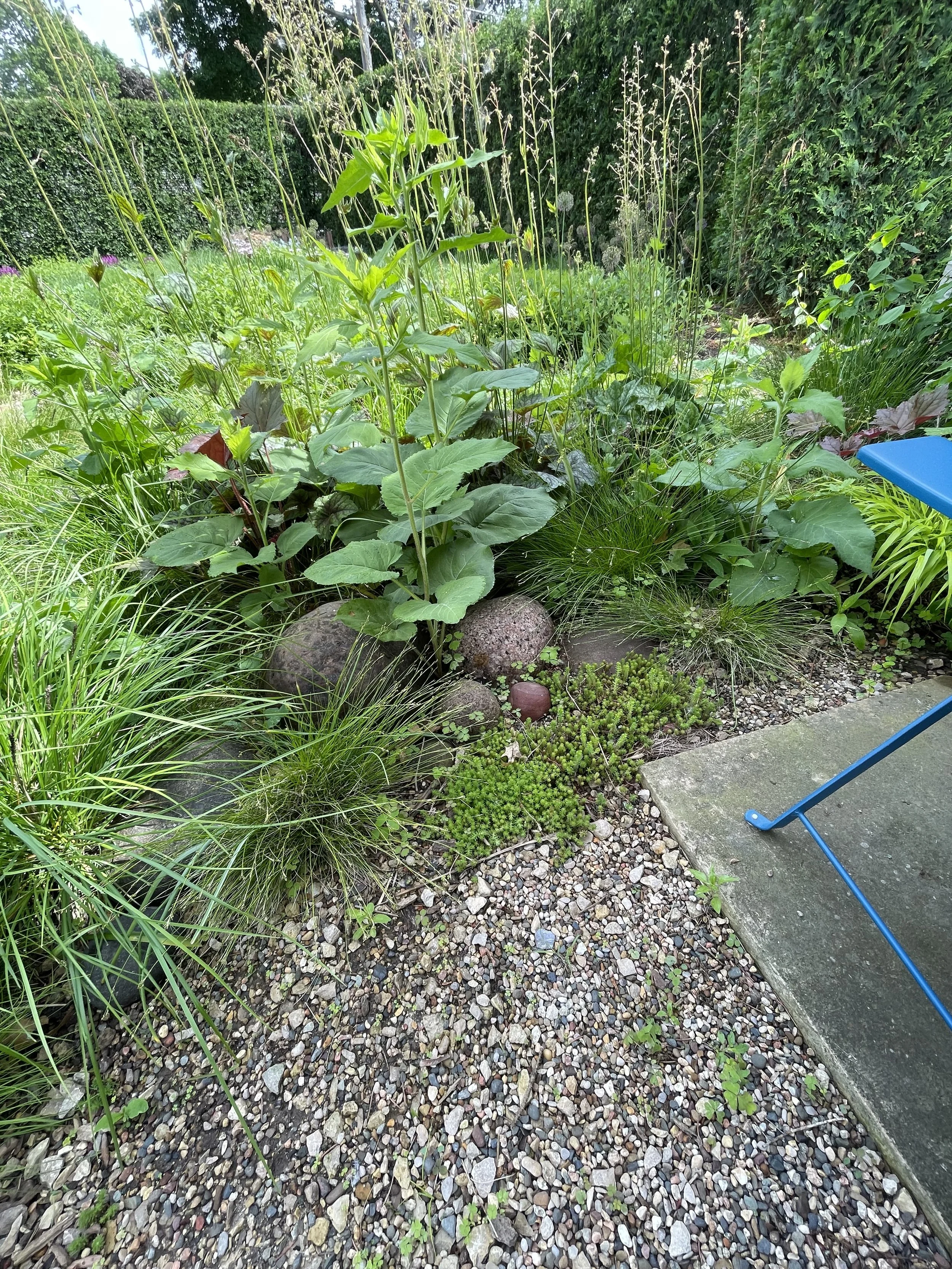
A view from the sitting area out to the sunnier parts of the back garden.
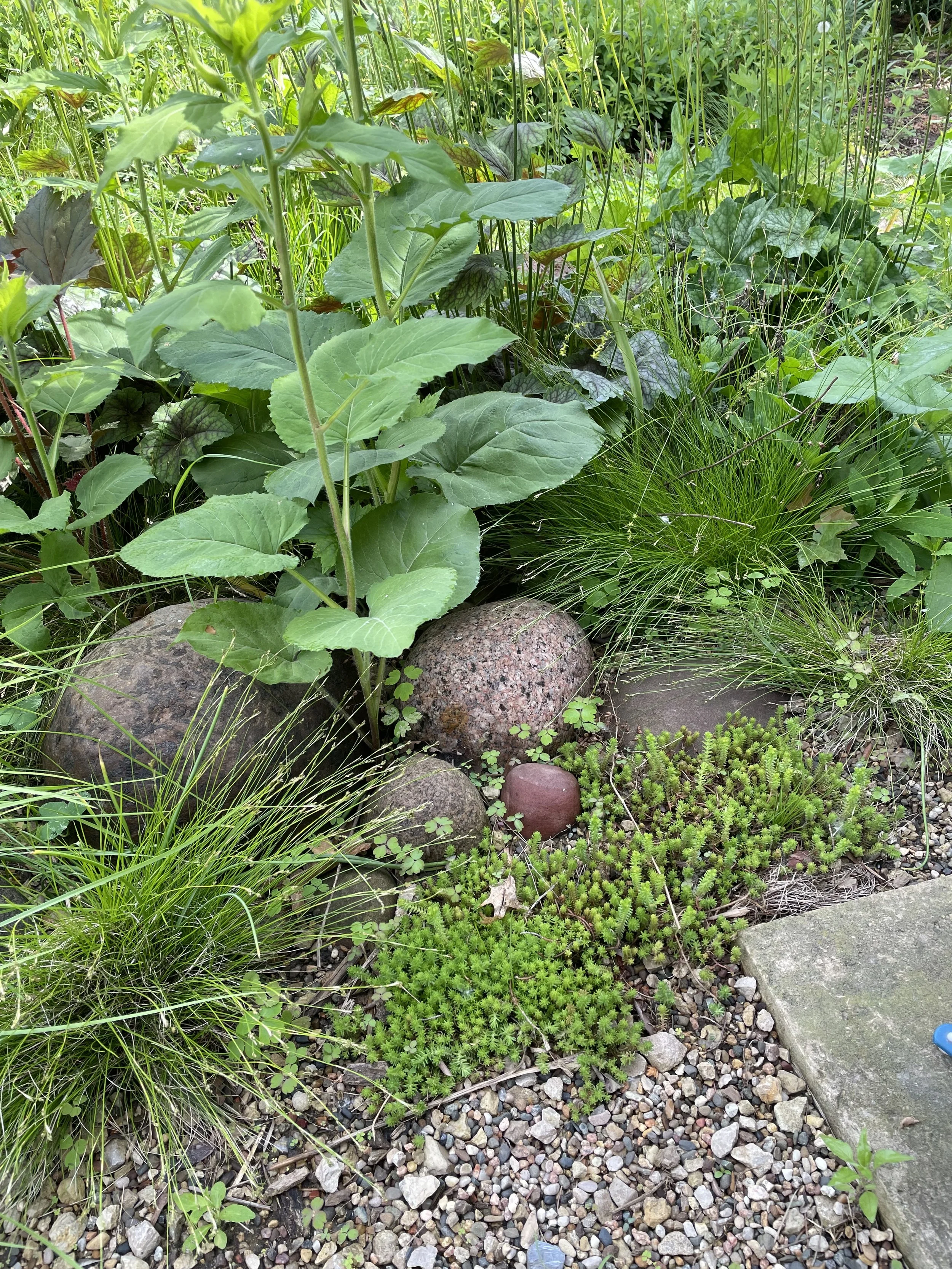
Adding lots of small detail in these intimate seating areas provides plenty visually to keep the mind processing. Here small granite boulders and the gravel floor coupled with Big Leaved Aster (Eurybia macrophylla), small Sedum groundcovers, Ivory Sedge (Carex eburnea), and American Alumroot (Heuchera americana var. Interior), provide plenty of form and texture variation
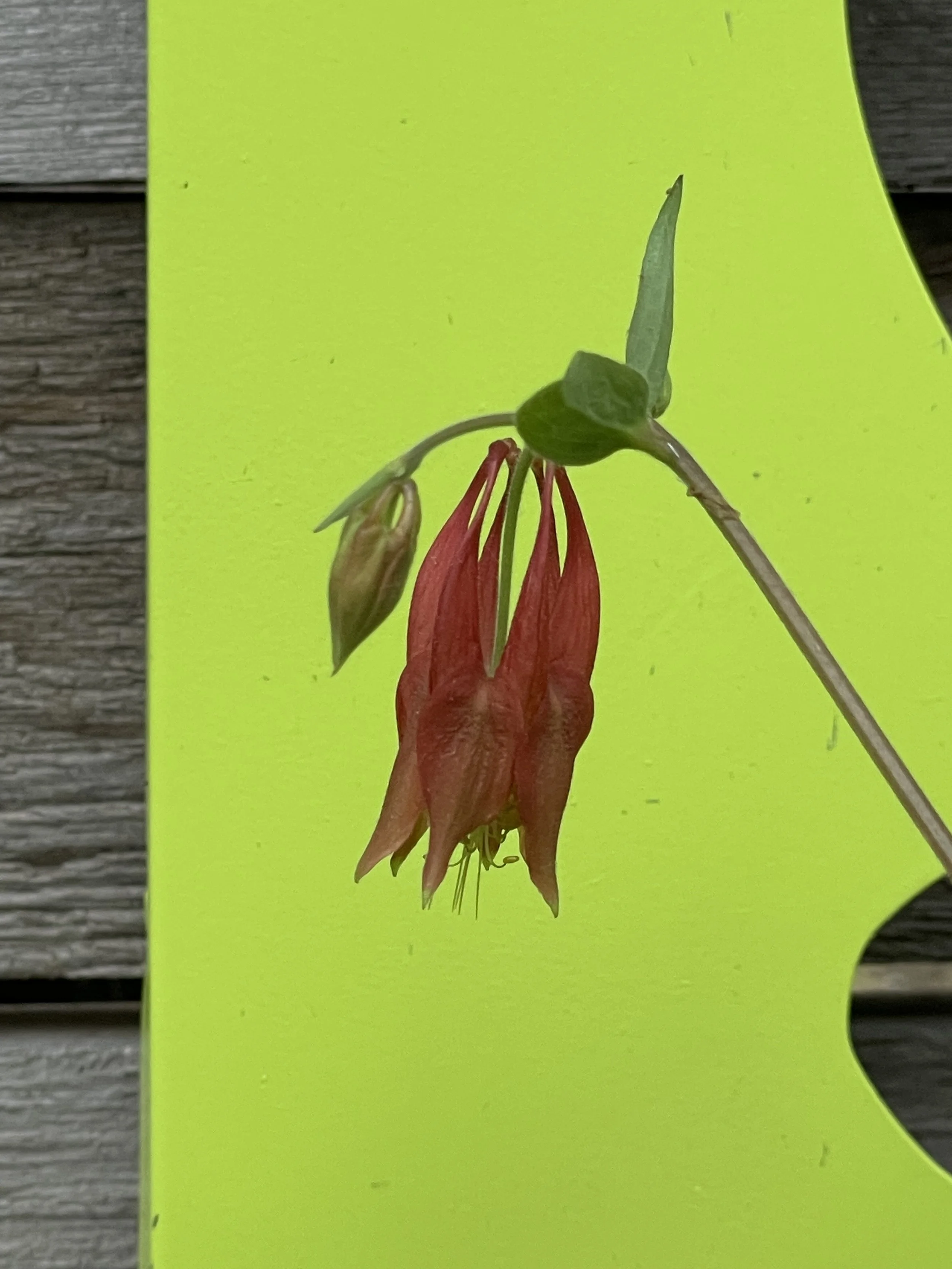
Self seeding is encouraged in many areas of the garden, including in the gravel floor of the seating area. Here Columbine (Aquilegia canadensis) has seeded right into the gravel, floor. It seems to like these poor soils with little organic matter and good drainage.

I couldn't resist including another foliage texture picture here. I'm a bit of a texture freak. This small little area holds Dwarf Crested Iris (Iris cristata), Fox Sedge (Carex vulpinoidea), Blue Lobelia (Lobelia siphilitica), Ivory Sedge (Carex eburnea), and Yellow Wood Sorrel (Oxalis stricta). I let the Oxalis, a native annual, seed around the garden as if fills in gaps between plants and it has a charming clover like leaf.

One of the benefits of creating outdoor spaces surrounded by nature is the opportunity to cross paths with handsome little beings like this Milky Slug (Deroceras reticulatum). Yes, slugs eat leaves but they are also food for toads and frogs. Eaten leaves are welcome in our garden because they are a subtle sign of a functioning ecosystem.
MAJOR EDITS - 2021
Edits in the garden layout and structure. Below are some in process pictures of the changes.
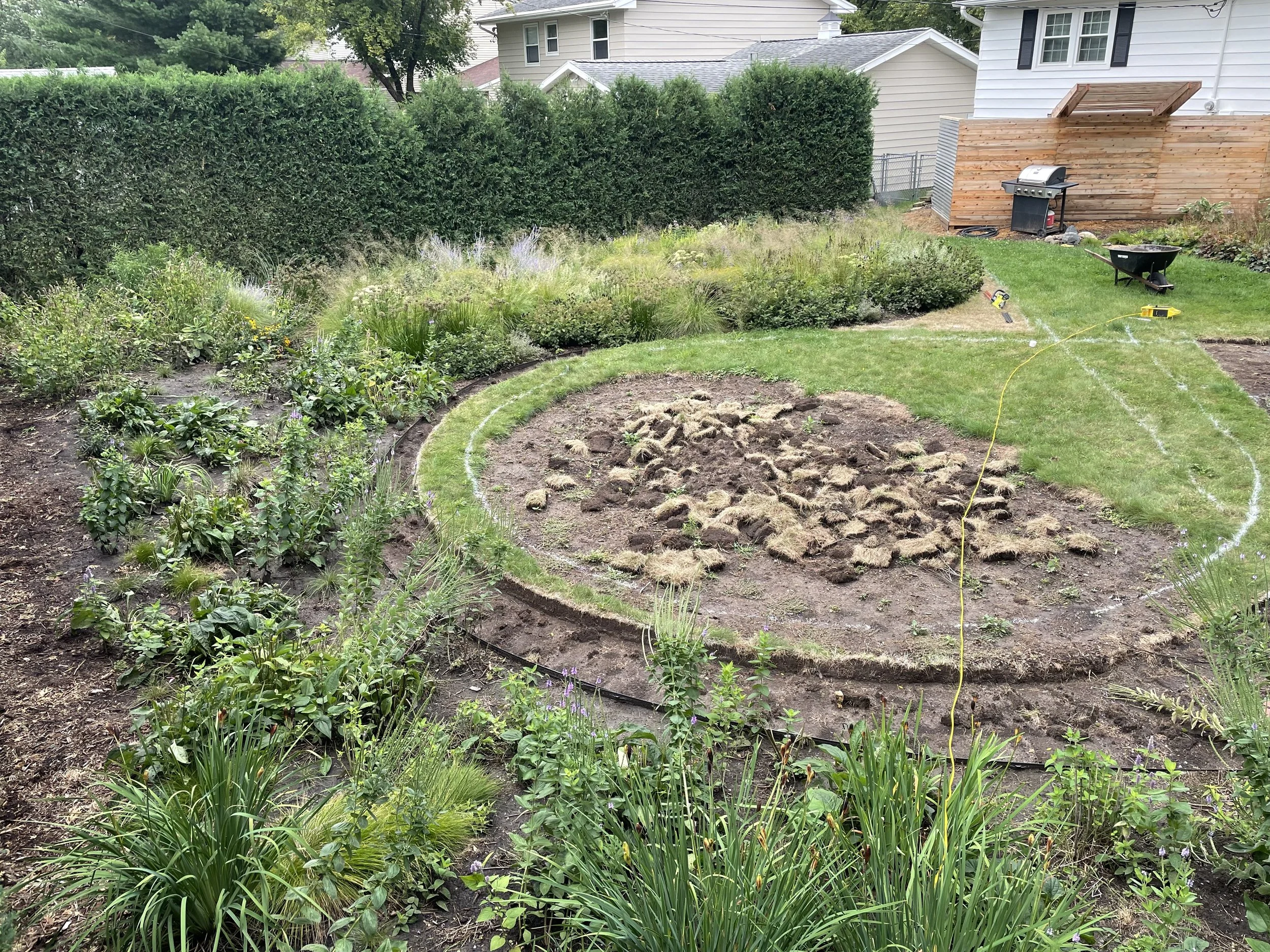
The new turf lines have been cut out. I wanted a more formal shape, in this case a circle to offset the more natural planting scheme.
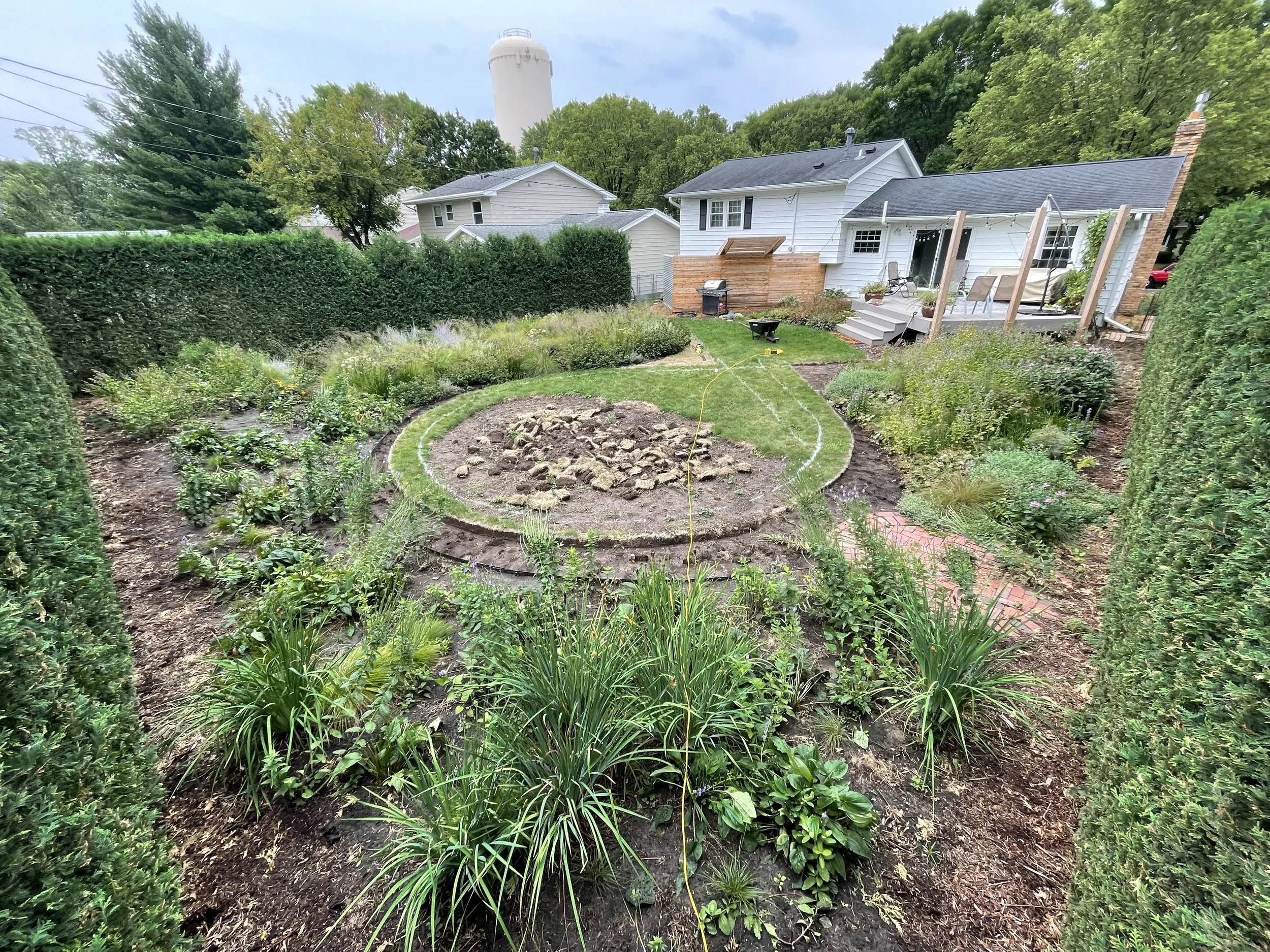
The cedar screening fence can be seen in the background. On the other side is space for tools, equipment and materials.
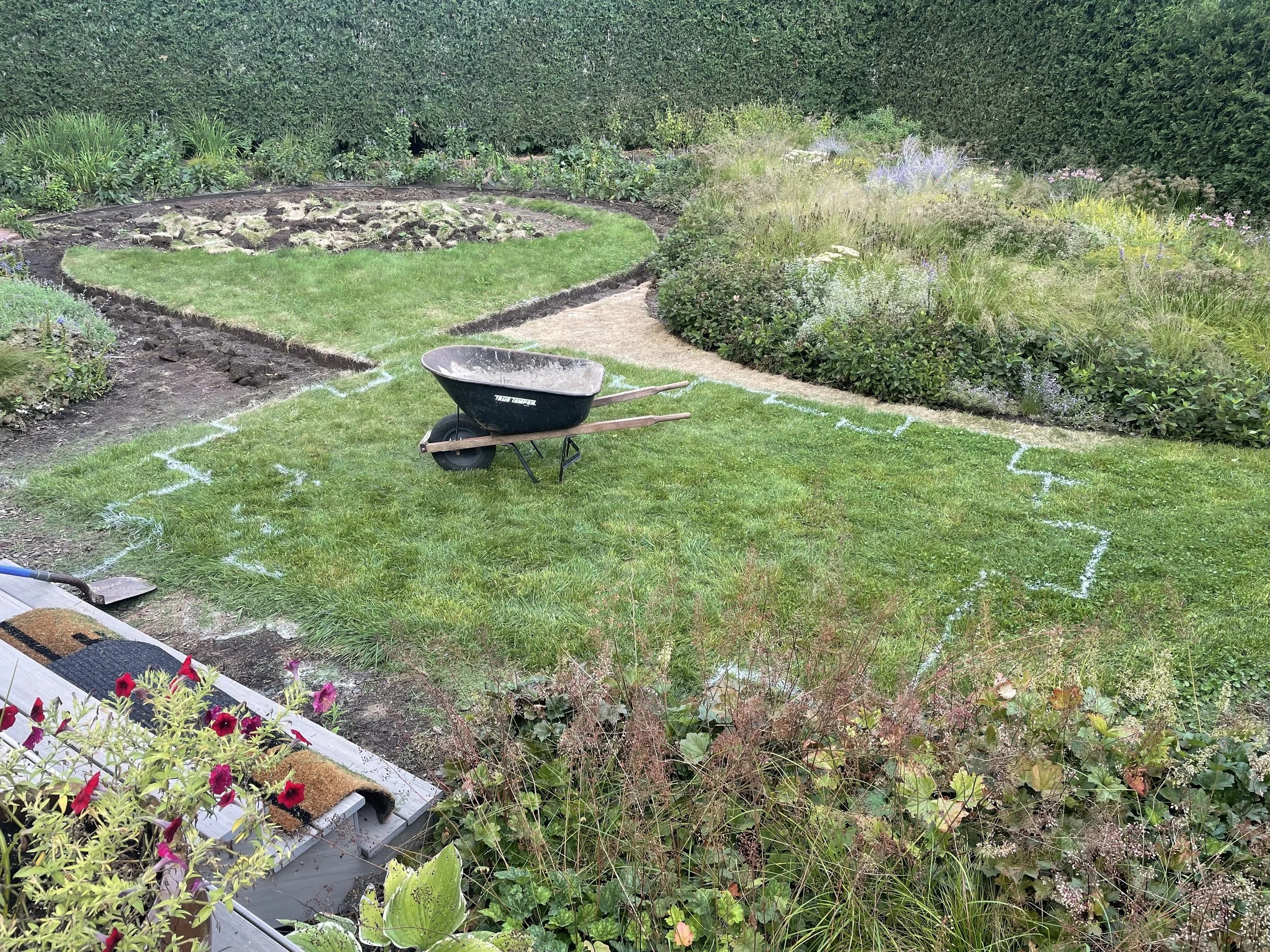
View looking from the deck/house to the back garden. The patio was to be installed where the wheelbarrow sits in the picture.
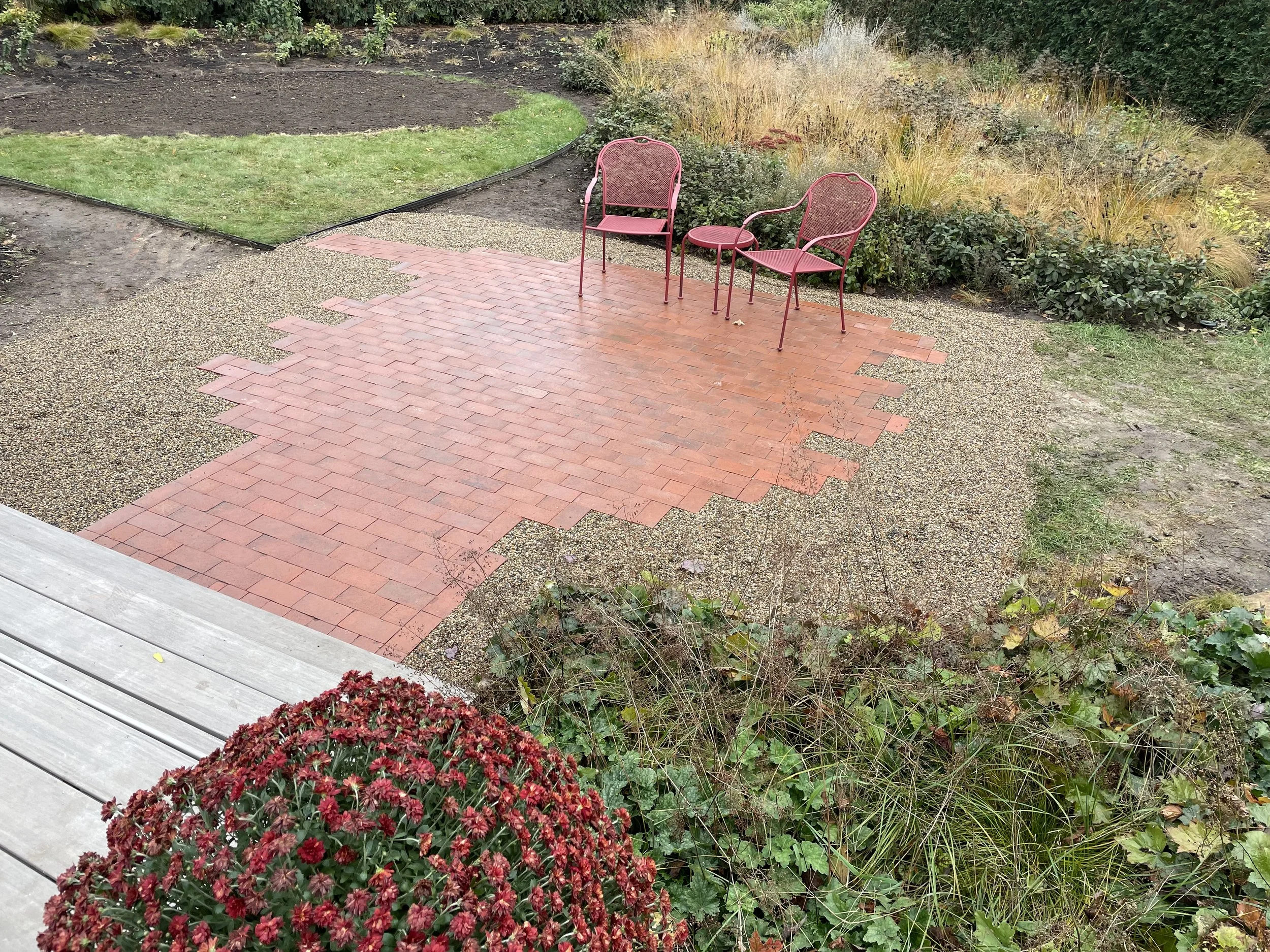
The small patio made with salvaged clay bricks.
Crushed Rock Pathway - 2024

Excavation work beginning on the narrow garden path. I contracted with Sargent's Landscape Nursery for the work.
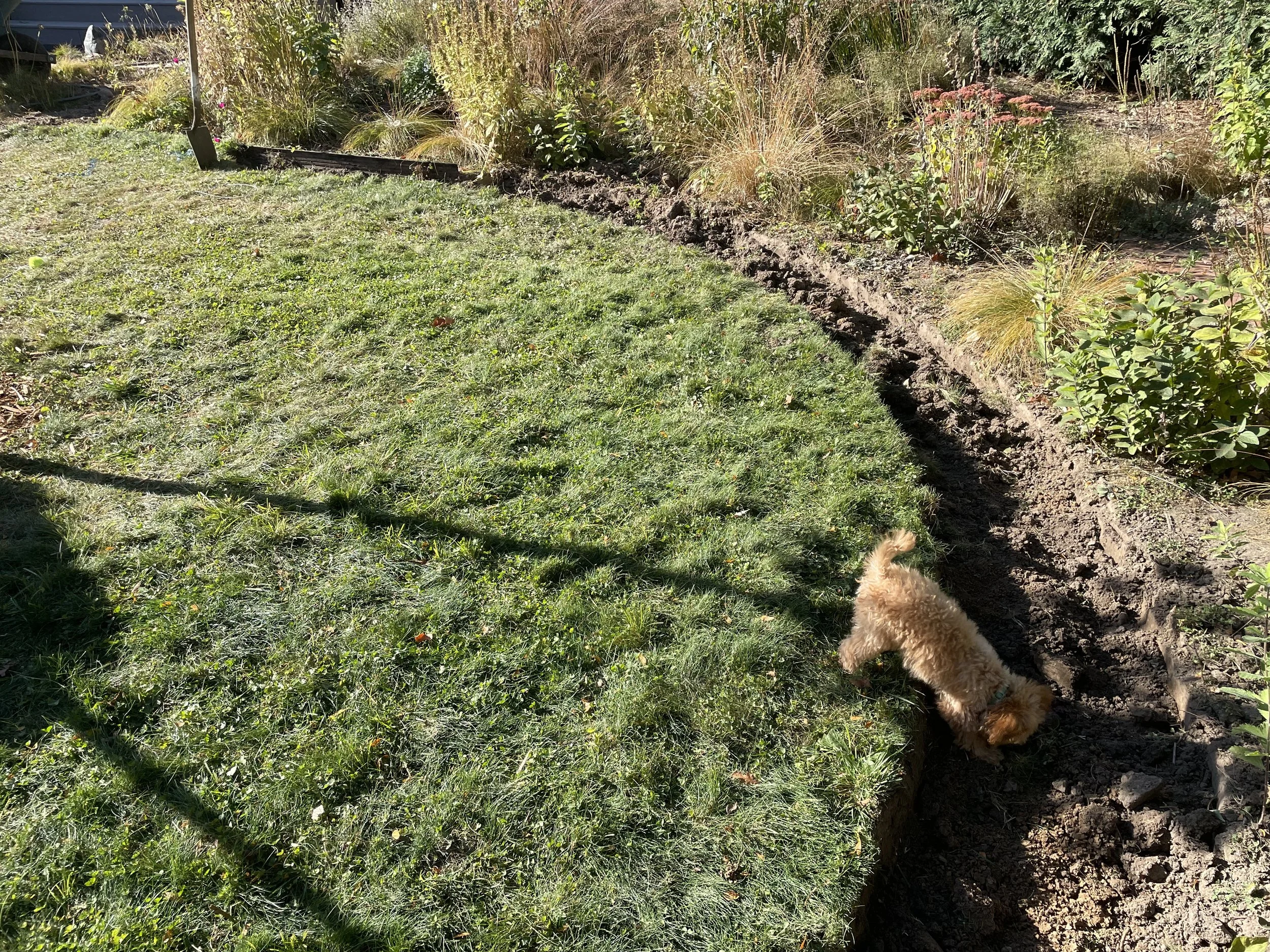
Theo inspecting the excavation work. He has a very discerning eye for workmanship.
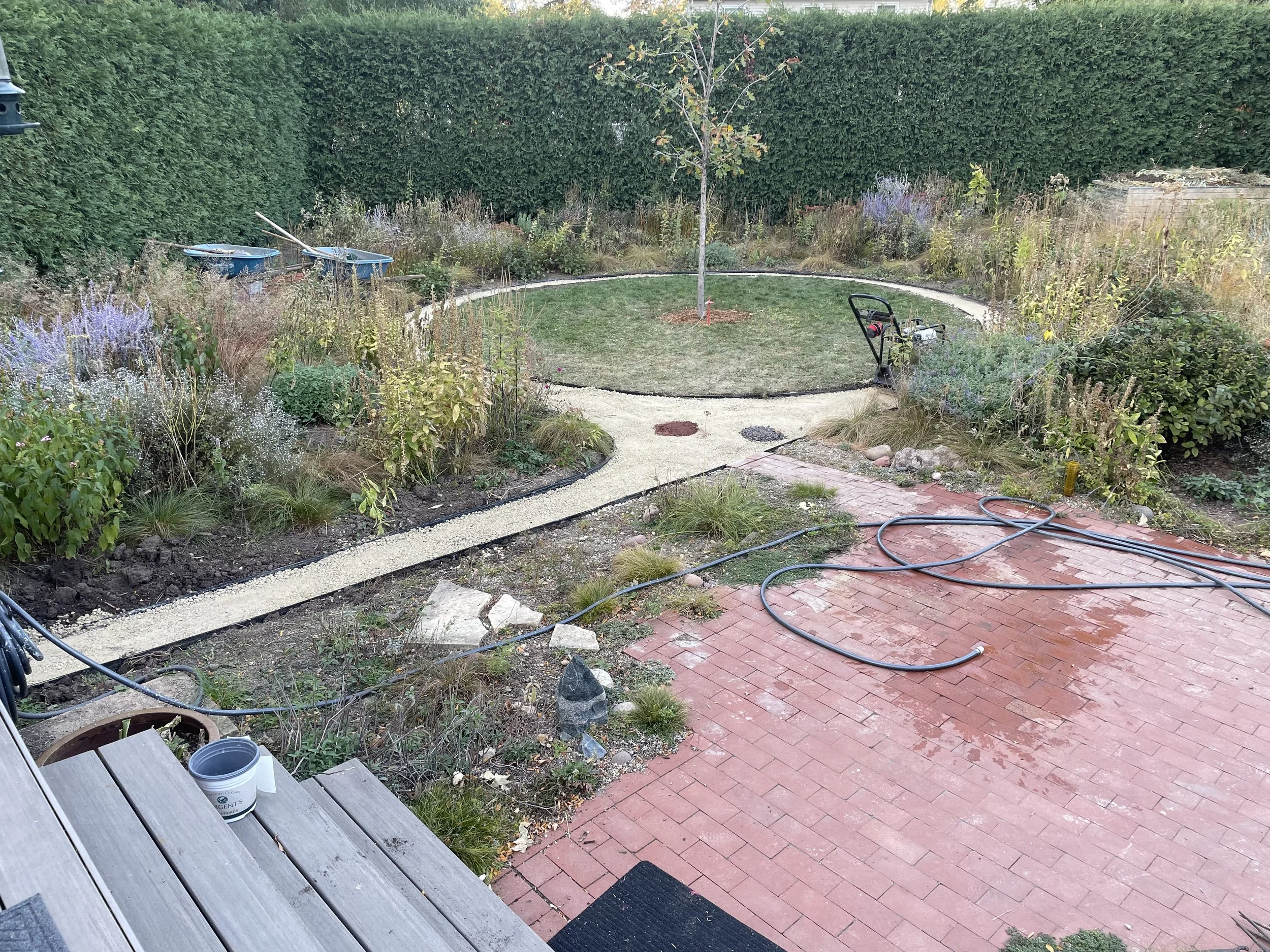
A compacted gravel base is placed to provide the path with strength.
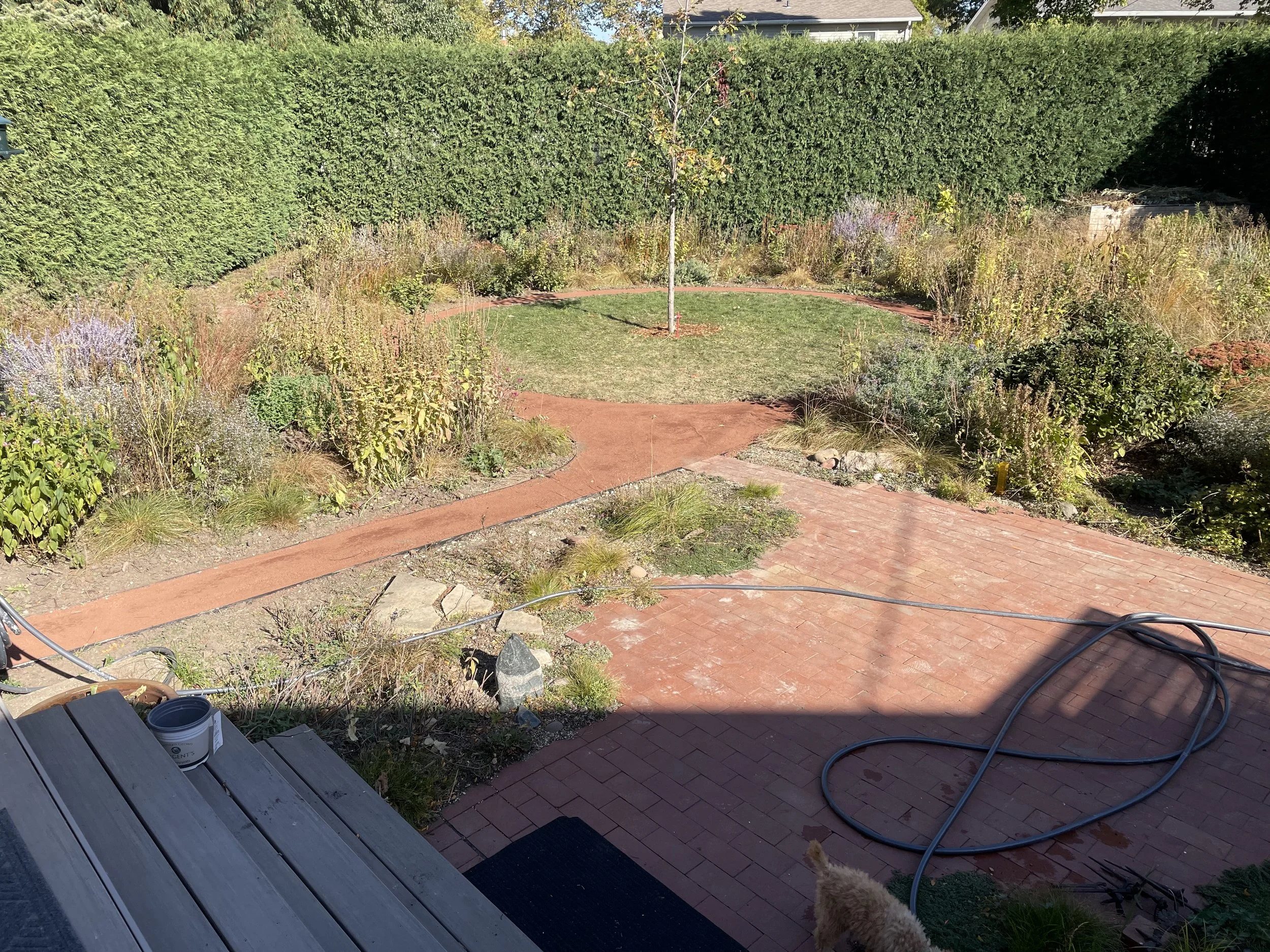
The crushed granite "veneer" is applied and compacted.
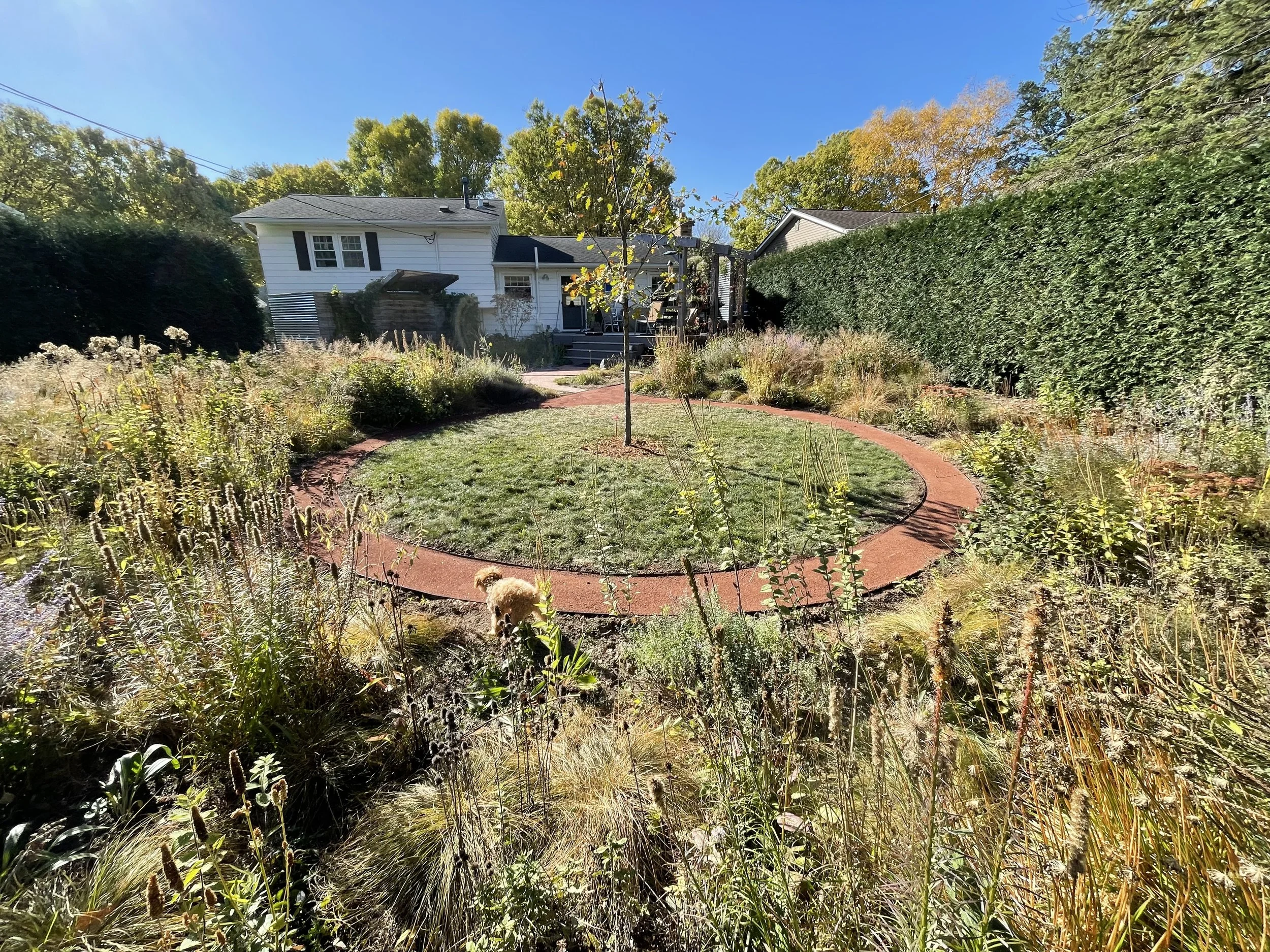
Bold geometry provides a counterpoint to the naturally planted meadow.
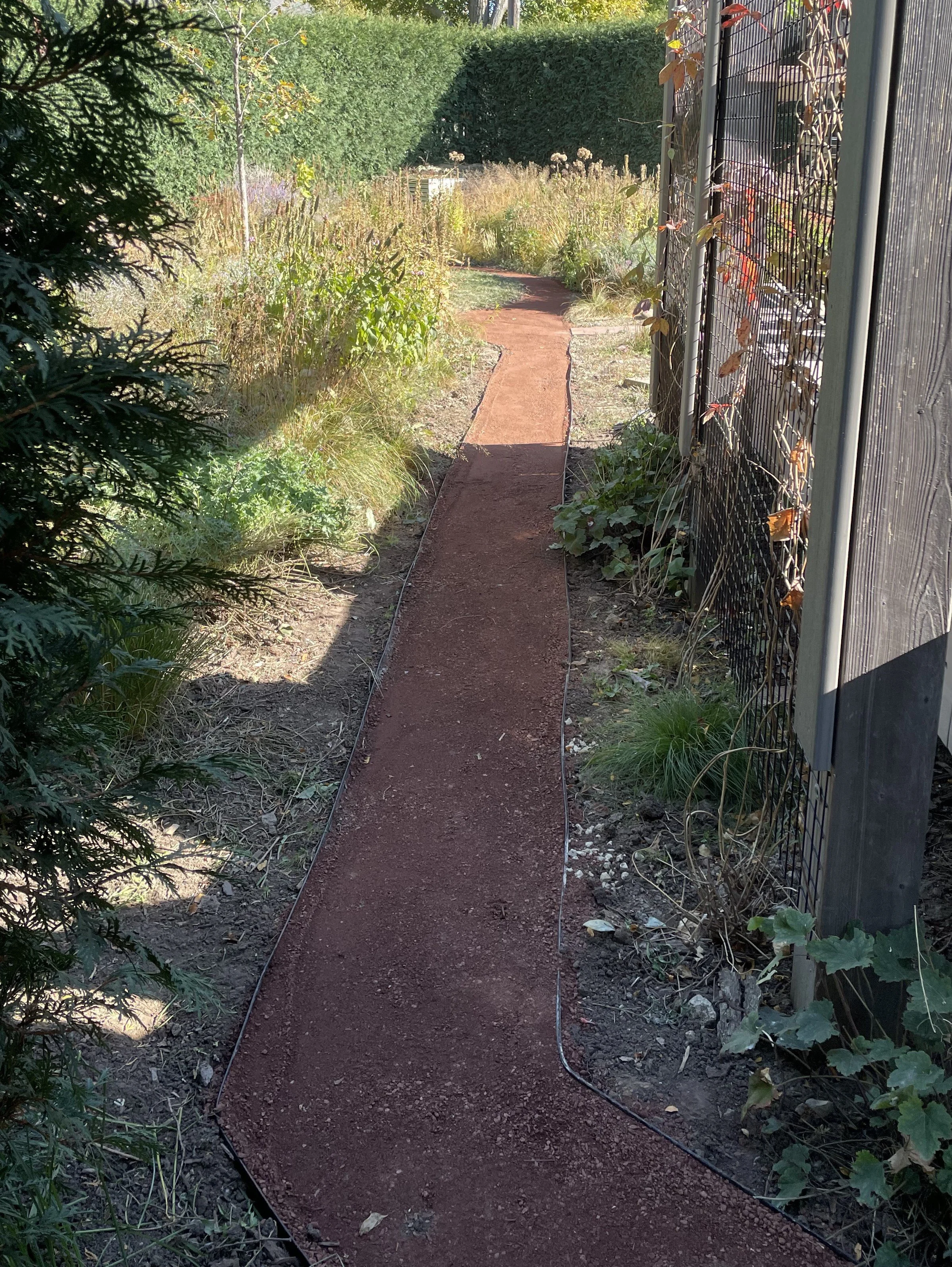
This portion of the path completes the connection between the front, side, and back gardens. It also provides the opportunity for a focal point at the end of the view.
